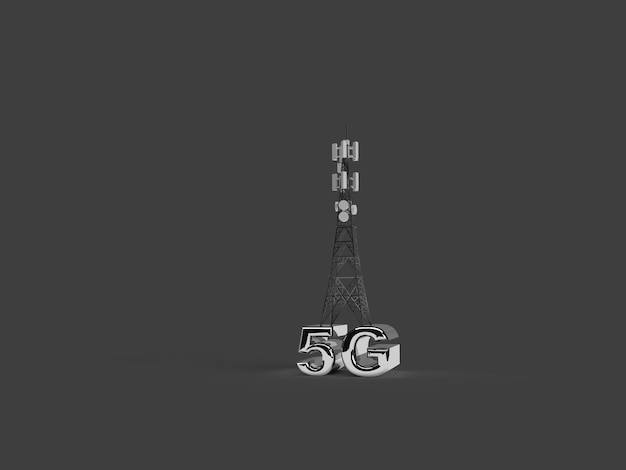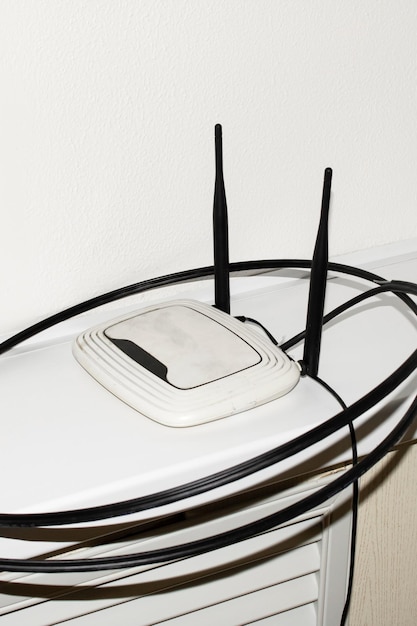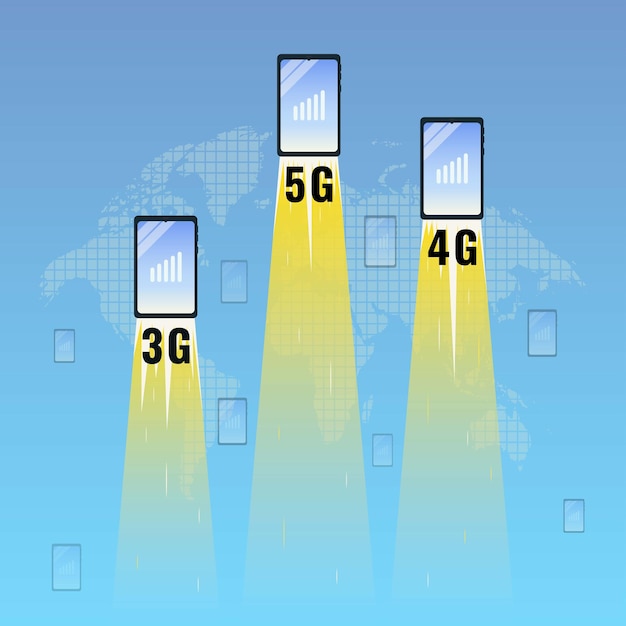5G Home Internet vs Cable: Which is Faster and More Reliable?

5G home internet is rapidly emerging as a contender to traditional cable internet, promising faster speeds and greater reliability, but a data-driven comparison is essential to determine which technology truly delivers superior performance.
The internet has become an indispensable part of modern life, and choosing the right type of connection is crucial for everything from work to entertainment. With the rise of 5G home internet: is it faster and more reliable than cable? A data-driven comparison will provide insights so you can make an informed decision based on facts and performance metrics.
Understanding 5G Home Internet
5G home internet represents a significant leap forward in wireless technology, offering an alternative to traditional wired connections like cable. This section explores the fundamentals of 5G home internet, its underlying technology, and the potential advantages it brings to consumers.
What is 5G and How Does It Work?
5G, or fifth-generation wireless technology, is the latest iteration of mobile internet connectivity. Unlike previous generations, 5G utilizes higher frequency bands, known as millimeter waves, to transmit data at significantly faster speeds. This allows for greater network capacity and reduced latency.
5G home internet leverages this technology by providing internet access through a 5G cellular network instead of physical cable lines. A 5G modem or router receives the signal from a nearby cell tower and converts it into a Wi-Fi signal for devices in the home.
Benefits of 5G Home Internet
5G home internet offers several potential benefits compared to traditional cable. These include:
- Faster Speeds: 5G is capable of delivering significantly faster download and upload speeds than most cable internet plans.
- Wireless Convenience: With no need for physical cables, 5G home internet offers greater flexibility in terms of installation and placement.
- Increased Competition: The rise of 5G home internet is introducing more competition in the broadband market, potentially driving down prices and improving service quality.
- Wider Availability: 5G can reach areas where laying cable is difficult or cost-prohibitive, expanding internet access to underserved communities.
While 5G home internet shows great promise, its real-world performance can vary. Factors that affect performance include proximity to the cell tower, network congestion, and the capabilities of the user’s equipment. These factors are explored in greater depth in subsequent sections.
Cable Internet: The Established Broadband Option
Cable internet has been a mainstay in many households for years, providing reliable broadband access through the same infrastructure that delivers cable television services. This section looks at the characteristics of cable internet and why it remains a popular choice.
How Cable Internet Works
Cable internet uses coaxial cables originally designed for television signals to transmit data. A cable modem connects to the cable outlet in your home and translates data signals into a format that your devices can understand. This allows for fast and reliable internet access.
Cable internet services are widely deployed, providing coverage to urban, suburban, and many rural areas. The widespread availability of cable infrastructure makes it a readily accessible option for many consumers.
Advantages of Cable Internet
Despite competition from newer technologies like 5G, cable internet continues to offer several advantages:
- Wide Availability: Cable internet is available in most populated areas, making it a reliable option for many households.
- Consistent Performance: Cable connections generally offer stable and predictable performance, with less fluctuation in speeds during peak hours.
- Bundling Options: Many providers offer bundled packages that include cable TV, internet, and phone services, providing cost savings and convenience.
Cable internet is not without its limitations. Shared bandwidth can lead to slower speeds during peak usage times. Also, upload speeds can be slower than download speeds.

While cable internet has a long track record of reliability, the emergence of 5G as a viable alternative challenges its dominance in the broadband market.
Speed Comparison: 5G Home Internet vs. Cable
One of the most important factors that consumers consider when choosing an internet service is speed. This section delves into a detailed speed comparison between 5G home internet and cable, examining both download and upload speeds.
Download Speeds
One of the main selling points of 5G home internet is its potential for faster download speeds. While advertised speeds can vary widely, real-world tests have shown that 5G can often match and sometimes exceed cable internet speeds, especially in areas close to 5G cell towers.
Cable internet also offers fast downloads, with plans offering a wide range of speeds depending on the provider and pricing. However, cable speeds can degrade during peak usage times because the bandwidth is shared among multiple users in the same area.
Upload Speeds
Upload speeds are particularly important for activities like video conferencing, online gaming, and uploading large files. Cable internet is often at a disadvantage when it comes to upload speeds, with plans typically offering significantly slower uploads compared to downloads.
5G home internet, on the other hand, can provide more balanced upload and download speeds, especially with newer versions of the technology. This can lead to a better user experience for applications that rely on fast uploads.
Data Caps and Throttling
Another important consideration is data caps and throttling. Some 5G and cable internet providers impose data caps, which limit the amount of data you can use each month. Exceeding these caps can result in additional charges or throttled speeds.
- Check the fine print of your internet plan to understand any data caps or throttling policies.
- Monitor your data usage regularly to avoid exceeding your limit.
- Consider upgrading to a plan with a higher data cap if you frequently exceed your limit.
A thorough evaluation of speed and data policies is crucial for determining which technology best suits your individual needs.
Reliability and Stability: Which Connection is More Consistent?
Beyond speed, reliability and stability are critical factors for a positive internet experience. This section compares the reliability of 5G home internet and cable, looking at factors like latency, uptime, and consistency.
Latency and Jitter
Latency, also known as ping rate, refers to the time it takes for data to travel from your device to a server and back. Lower latency is essential for real-time applications like online gaming and video conferencing.
Jitter refers to the variation in latency over time. Excessive jitter can lead to choppy audio and video, negatively impacting the user experience.
Uptime and Downtime
Uptime refers to the amount of time that your internet connection is functional and available. Downtime refers to periods when your internet connection is unavailable due to technical issues, maintenance, or other factors.
Cable internet has traditionally been known for its high uptime and low downtime, thanks to its established infrastructure. 5G home internet, however, can be subject to more frequent outages due to weather conditions, network congestion, and other factors.
Factors Affecting Reliability
Several factors can affect the reliability and stability of both 5G and cable internet connections:
- Weather Conditions: 5G signals can be affected by rain, snow, and other weather conditions, potentially leading to reduced speeds or outages.
- Network Congestion: Both 5G and cable internet can experience slowdowns during peak usage times due to network congestion.
- Equipment Quality: The quality of your modem, router, and other equipment can affect the reliability of your internet connection.
- Interference: 5G signals can be affected by interference from other electronic devices, while cable connections can be affected by damaged or corroded cables.

Considering these factors can help you assess which type of internet connection is more likely to meet your needs for reliability and stability.
Cost Comparison: Weighing the Financial Factors
The cost of internet service is another critical factor for consumers. This section provides a detailed cost comparison between 5G home internet and cable, considering upfront costs, monthly fees, and potential hidden charges.
Upfront Costs
Upfront costs can include installation fees, equipment rental fees, and activation fees. Cable internet often involves professional installation, which can add to the upfront costs.
5G home internet often has lower upfront costs, as the equipment is typically self-installable, and providers may offer promotional discounts or free equipment.
Monthly Fees
Monthly fees are the recurring charges for your internet service. Cable internet plans often come with tiered pricing, where you pay more for faster speeds.
5G home internet plans may have more straightforward pricing, with a flat monthly fee for a specified speed range. However, it is important to read the fine print and understand any potential price increases after promotional periods.
Hidden Charges
Hidden charges can include data overage fees, early termination fees, and equipment return fees. It is crucial to read the terms of service carefully to understand any potential hidden charges before signing up for an internet plan.
- Check for data caps and overage fees.
- Understand the terms of your contract, including early termination fees.
- Inquire about equipment return policies and potential fees.
By carefully evaluating these financial factors, consumers can make a cost-effective decision that fits their budget.
The Future of Home Internet: Trends and Projections
The home internet landscape is constantly evolving, with new technologies and trends emerging all the time. This section explores the future of home internet, looking at the potential for further advancements in both 5G and cable technologies.
Advancements in 5G Technology
5G technology is continuing to evolve, with newer versions offering even faster speeds, lower latency, and greater capacity. Advancements in millimeter wave technology and network infrastructure are expanding the reach and reliability of 5G home internet.
As 5G networks become more robust and widespread, it is expected that 5G home internet will become an increasingly viable option for more households.
Improvements in Cable Internet
Cable internet providers are also working to improve their technology and offerings. DOCSIS 4.0, the latest version of the cable internet standard, promises significantly faster speeds and improved performance.
Convergence of Technologies
The future of home internet may involve a convergence of technologies, with providers offering hybrid solutions that combine the best aspects of both 5G and cable. This could involve using 5G for wireless backhaul and cable for last-mile connections, or vice versa.
The market continues to compete, driving innovation and improving the overall experience for consumers. Embracing change and staying informed allows consumers to make the right choices for their home internet needs.
| Key Point | Brief Description |
|---|---|
| 🚀 Speed | 5G can offer competitive download and upload speeds. |
| 📶 Reliability | Cable generally has more consistent uptime, but new 5G versions are improving. |
| 💰 Cost | 5G might have lower upfront costs. Check long-term and hidden charges. |
| 🌐 Availability | Cable is widely available; 5G expands access, especially in underserved areas. |
Frequently Asked Questions
5G home internet’s main advantages include potentially faster speeds, wireless convenience, increased competition among providers, and wider availability, especially in areas where laying cable infrastructure is challenging.
Cable internet has traditionally been more reliable due to its established infrastructure. However, advancements in 5G technology are gradually improving its stability, though it can still be susceptible to weather-related issues.
Yes, many 5G home internet plans may have data caps. It’s important to check the terms of service for any data limits and potential overage charges or speed throttling if you exceed the cap.
Consider factors like speed requirements, reliability needs, cost (including both upfront and monthly fees), availability in your area, and data cap policies. Also, think about how you use the internet—streaming, gaming, or video conferencing?
Future improvements in 5G technology include faster speeds, lower latency, and increased network capacity. These advancements aim to make 5G home internet more reliable and accessible, rivalling and possibly surpassing traditional cable internet.
Conclusion
In summary, both 5G home internet and cable offer distinct advantages and disadvantages. 5G brings wireless convenience and competitive speeds, while cable offers established reliability and widespread availability. The best choice depends on individual needs, priorities, and local conditions. Careful evaluation, data analysis, and research of available options will lead to a better informed consumer.